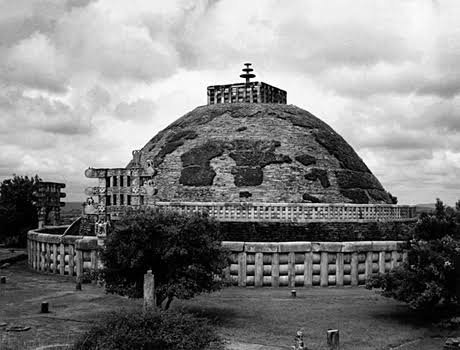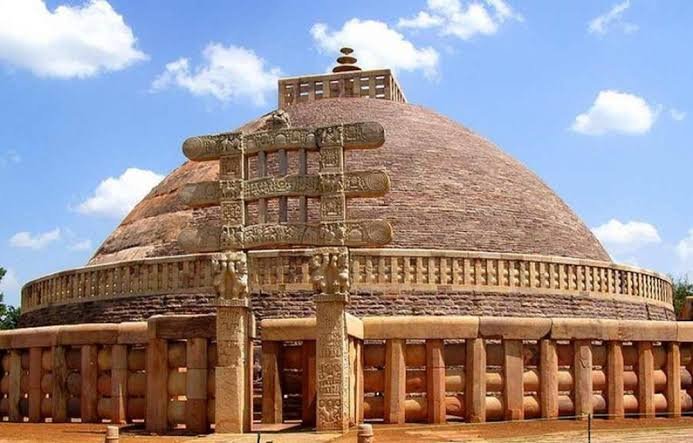A Buddhist relic Amaravati Stupa from the Amaravati school of Art was discovered in Andhra Pradesh, originating from Amaravati and patronized by the Satavahanas and Ikshavaku. The style developed in prominent locations like Amravati, Nagarjuna Konda, Goli, Ghantasala, and Vengi.
Situated in the Palnadu district of Andhra Pradesh, Amaravathi is a witness to the centuries-long blending of art, history, and religion that has formed the area. Here are some salient features of this amazing site:
Table of Contents
Amaravati Stupa : Mahayana Buddhism’s birthplace:

Mahayana Buddhism originated at Amaravathi. Here lived Acharya Nagarjuna, the founder of the Madhyamika school of thought, which forms the cornerstone of Mahayana Buddhism. His teachings extended throughout South Asia, China, Japan, Korea, and Southeast Asia, greatly impacting the practice of Buddhism.
Unique Aspects of Andhra Buddhism Patrons:
In contrast to North Indian stories, which frequently feature royal patronage, Amaravathi’s supporters included craftsmen, traders, and itinerant monks.
Local Practices of Amaravati Stupa :
The venerating of the dead in megalithic tombs appears to have naturally led to the idea of the Buddhist stupa in Amaravathi. Buddhist customs also included indigenous religious practices like goddess and naga (snake) worship. Amaravathi is home to a multitude of exquisite sculptures that surround the stupa drum, exhibiting an unmatched level of artistry.
Decline and Revival:
Up to roughly the third century CE, Buddhism flourished in the area for nearly six centuries. Buddhism persisted in isolated locations like Amaravathi until the fourteenth century CE. Some of Amaravathi’s sites are currently being restored for tourism, protecting its tangible history, after approximately 1500 years of neglect.
There are still remnants of past civilizations in Amaravathi still palpable in the remnants they left behind—a journey through time and culture.
Amravati school of sculpture

The Amaravati style of art originated in the modern-day Andhra Pradesh region of Amaravati, which was formerly known as Dhānyakaṭaka.
Here are some salient details regarding this extraordinary creative heritage:
Time and Impact: From the end of the second century BCE to the end of the third century CE, in operation.
Also referred to as the Vengi School or the Andhra School.
It had a long-lasting effect on art in South India, Sri Lanka (as evidenced at Anuradhapura), and South-East Asia due to its influence in marine trade.
Features: The sculptures of Amaravati are dynamic, lively, and peacefully naturalistic.
This style was used to produce images that were both secular and religious.
Buddha Images: The Amaravati style brought standardization to the Buddha image, which in turn affected Buddhist art in other nations.
Its popularity endured in Sri Lanka until the 12th century .
Sites:
of addition to Amaravati, stupa remnants of this type may be seen in Ter, Maharashtra, Jaggayyapeta, Nagarjunakonda, and Ghantasala.
The magnificent reliefs of the Amaravati school are still regarded as some of the best narrative sculptures in existence, and they are proof of the inventiveness and skill of ancient India!
specific features of Amravati school of sculpture
The Amaravati School of Sculpture is renowned for its narrative art, featuring stories and events often symbolizing Buddha’s life.
The school features both religious and secular images, with figures displaying intense emotions. The sculptures also feature slender figures with dynamic movements, often displaying the characteristic tribhanga posture.
The intricate and complex compositions of these sculptures create a sense of 3D space, surpassing even those found at Sanchi.
for more intresting update follow our official website.
